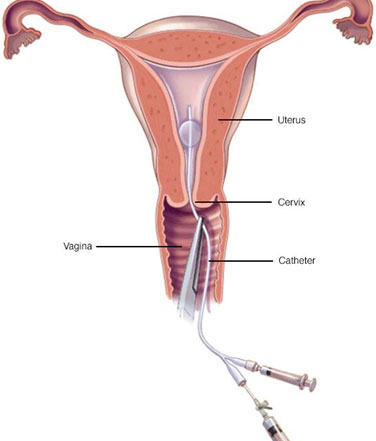Hysteron Salpingo Gram
A hysterosalpingogram (HSG) is used to scope out the uterine cavity for any irregularities and check if the fallopian tubes are open or not. This procedure is performed in the office and might cause mild discomfort. It involves injecting x-ray contrast dye into the cervix to fill the uterus and spill out of the fallopian tubes and into the ovaries. Abnormalities in the uterus and/or obstruction in the tubes can be seen when the dye does not fill and spill correctly. Because of the dye used for this, it’s extremely important that you inform us if you have an allergy to iodine or shellfish, prior to starting the HSG.

WHEN TO HAVE A HYSTEROSALPINGOGRAM
A hysterosalpingogram is used to examine the uterine cavity and fallopian tubes for abnormalities and might be recommended for the following reasons:
- Infertility
- History of miscarriages
- Check if tubes are open
WHAT TO EXPECT: DURING
The process of having a hysterosalpingogram takes around 15 minutes or less. It’s typically performed after your menses and prior to ovulation (cycle day 8, 9, 10). For this test you will be undressed from the waist down, lying on an exam table, and can expect the following:
- Position under fluoroscope: you will be placed under an x-ray imager that will capture pictures throughout the test
- Speculum:a speculum will then be inserted into the vagina to open the cavity for visualization and access to your cervix. After this, a swab is used to wipe and clean your cervix.
- Catheter:next, a thin catheter will be inserted into the opening of your cervix, which may cause a slight cramping once the catheter is fully inside.
- Iodine dye: once the catheter is in place, iodine dye is injected into the catheter, through the cervix, and into the uterus. The dye should fill the uterus completely, pass through the tubes, and spill into the ovaries. Meanwhile, images will be captured to determine any signs of irregularities within the uterine cavity and fallopian tubes.
- Remove catheter: the catheter will then be removed from the vagina which will cause iodine dye to leak out—you can expect this for a few hours following the test.
WHAT TO EXPECT: AFTER
It’s common for the dye to leak from the vagina after the test, using a pad will help with this (to avoid infection, do not use a tampon). Most women immediately resume normal activity and return to work or home. However, there are some side effects that you might experience including:
- Cramping and mild discomfort
- Sticky, blood-tinged discharge (from the dye)
- Mild spotting
In rare cases, you may develop an infection which should be addressed immediately. Please inform us if you experience any of the following:
- Fever
- Foul-smelling discharge
- Severe pain and cramping
- Heavy bleeding
You will need the Adobe Reader to view and print these documents. 